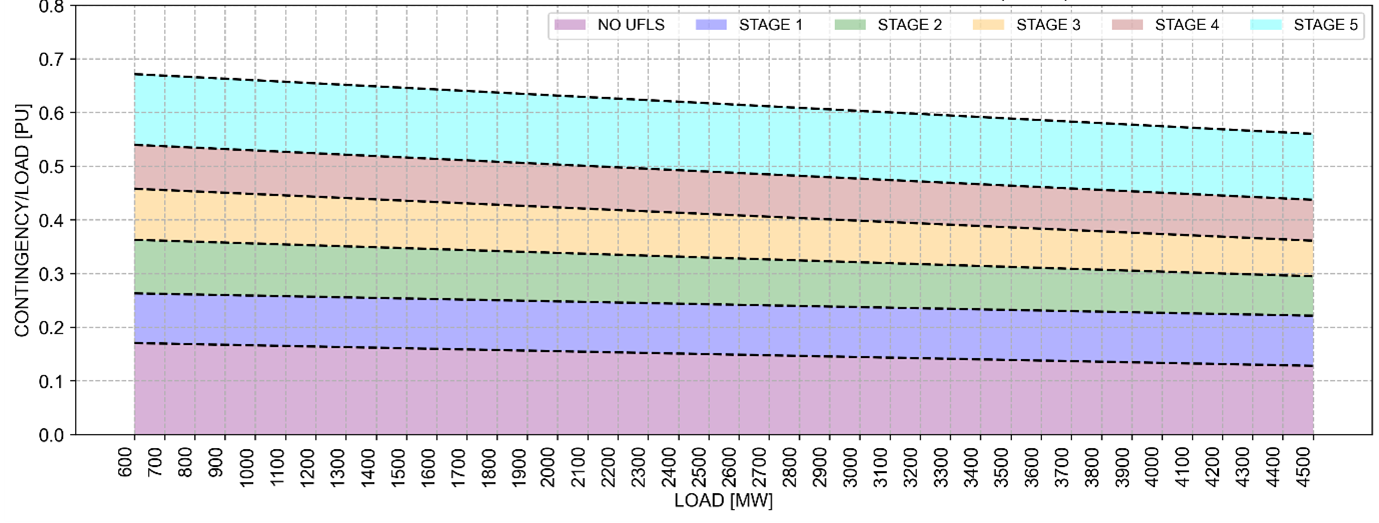Under Frequency Load Shedding
Under Frequency Load Shedding (UFLS) schemes are emergency mechanisms that are designed to mitigate the risk of power system collapse following multiple Non-Credible Contingency Events. The scheme only operates during rare events where a drop in frequency has not been arrested sufficiently by Frequency Control Essential System Services.
UFLS schemes typically consist of a series of relays linked to circuit breakers, which progressively disconnect load blocks in response to a frequency drop. This disconnection occurs in a coordinated and automatic manner that is designed to arrest frequency drop and prevent the system from collapsing completely.
Once the UFLS scheme has operated and the SWIS is once again stable, AEMO will commence the process of restoring frequency to the normal operating frequency band by coordinating with Network Operators to progressively restore load, based on available generation and reserves.
Following an UFLS event, AEMO will also typically issue a Dispatch Advisory to notify Market Participants of the event and will subsequently coordinate with Network Operators to review the performance of the UFLS scheme to confirm that it operated correctly. Where changes are required to the UFLS scheme, AEMO will coordinate with the relevant Network Operator to ensure that the necessary changes are made.
The UFLS Requirements document contains requirements for each Network Operator to design and implement an automatic UFLS scheme to support Power System Security. AEMO must determine the UFLS Requirements in accordance with section 3.6 of the WEM Rules.
Network Operators must design their UFLS schemes to meet the UFLS Requirements and must develop and issue an UFLS Specification to AEMO demonstrating how the scheme will meet the requirements. Network Operators must also submit reports annually to AEMO identifying the capability of the UFLS scheme to meet the UFLS Requirements over the next 10-year horizon.
The UFLS Requirements and any amendments can be accessed below:
Under the Western Australian Government’s DER Roadmap, AEMO has been coordinating with Western Power on a broader review of the impact of Distributed Energy Resources (DER) on the performance of the UFLS scheme. Initial results of this investigation indicate that while the UFLS Requirements as published above are currently adequate, there is a need to refine these as the energy generation and usage changes in the SWIS, including as the level of DER grows.
Figure 1 – Analysis of UFLS stage activation risk compared to contingency size
Figure 1 above is indicative of the analysis that AEMO has been conducting with Western Power. It shows that as the contingency size increases relative to the load, the risk of UFLS activation at multiple stages also increases. However, with the UFLS scheme designed to meet the UFLS Requirements above, that risk is manageable based on typical dispatch patterns, DER levels and availability of reserves.
There may be times where AEMO may need to intervene operationally if there is insufficient available load for the UFLS scheme, including actions such as:
- Constraining on generation to ensure sufficient levels of reserves and inertia are available
- Limiting the output of dispatchable generation to minimise the size of the contingencies
AEMO will continue to work with Western Power on refining the UFLS Requirements and the resulting UFLS scheme.







